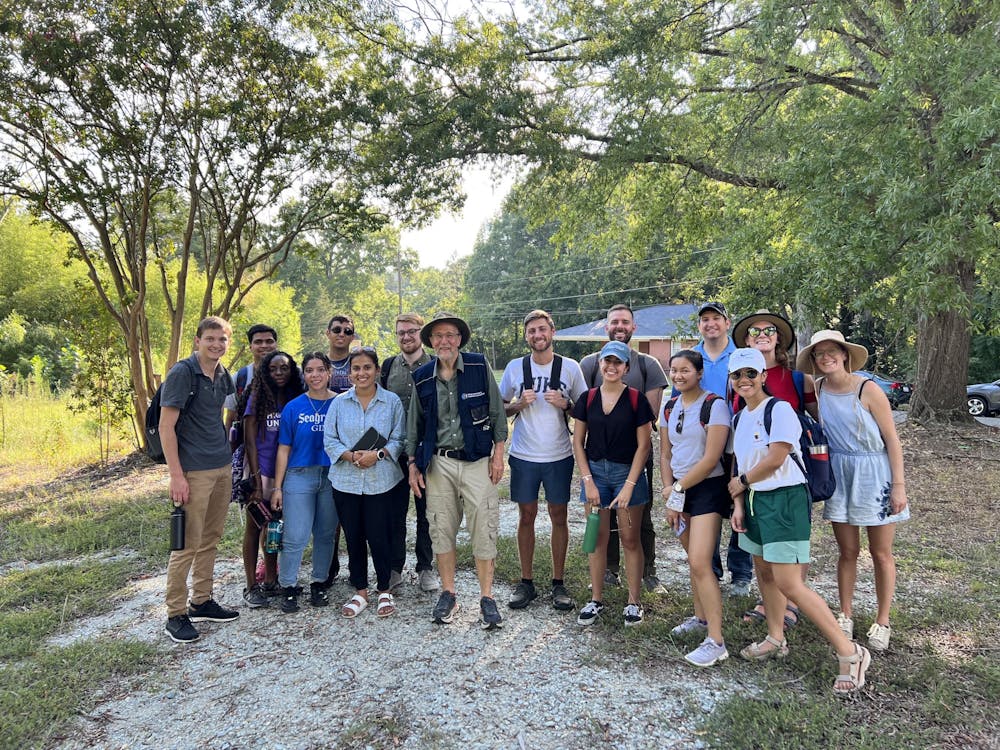Researchers are about to start drilling a 400-foot deep hole on Duke’s campus to explore geothermal possibilities and conduct geological research.
Geothermal energy, a renewable energy source which harnesses the heat of Earth’s core, is typically accessed by drilling into the Earth’s crust.
The drilling project is integrated with the fall 2022 graduate course ECS 590: Special Topics in Earth and Climate Sciences taught by Peter Malin, professor emeritus at the Nicholas School of the Environment.
Malin said that the 75-millimeter wide borehole will be drilled in early October on what was formerly Central Campus.
Researchers will study Durham’s geology and preliminarily assess the geothermal potential while graduate students will get hands-on geoscience experience.
In addition to lectures on geosciences and trips to the active drill site, students will participate in projects like testing groundwater chemistry, analyzing rock samples, or measuring changes in underground temperature, according to Malin. For their final projects, students will write a position paper on whether Duke should pursue geothermal energy.
The U.S. Department of Energy announced plans to invest in domestic geothermal energy development in July. Malin believes students will benefit from a practical drilling education, because he sees this recent announcement as a “vote of confidence” in geothermal resources.
“We need to investigate more opportunities for decarbonizing our electricity and this is one example of how we can use our campus as a laboratory for doing so,” Toddi Steelman, Stanback dean of the Nicholas School, wrote in an email.
Steelman approved the funding for the drilling project through the Dean’s Research Venture Initiative, which aims to support “innovative, early-stage environmental research.”
“Our students will be the next generation of leaders in the world,” she wrote. “It is important that this generation be fluent in the challenges posed by climate change and the steps we can take to address it.”
Katie Owens, a second-year graduate student enrolled in the course, expressed excitement to learn about the costs and complications of pursuing geothermal energy.
“We’re going to need a lot of innovation in our lifetime to figure out the energy challenge that we have ahead of us, so this is a great opportunity to learn about how to manage [geothermal] implementation practices,” Owens said.
Malin said that the entire length of the borehole will be cored, meaning that whole cylindrical samples of rock will be collected as drilling commences.
Analysis of these cores could give researchers insight into Durham’s geological history. While student researchers plan to run tests on the cores independently, Malin said that additional funding could help send the cores to scientists at the U.S. Continental Scientific Drilling facility for more thorough analysis.
Paul Baker, professor of earth and climate sciences at the Nicholas School, is the project’s principal investigator. He hopes that drilling 400 feet is deep enough to reach a magmatic rock layer formed by volcanic eruptions 201 million years ago.
Studying this rock will reveal more about the history of the Durham Basin and could have implications for potential geothermal energy development, according to Baker.
According to Baker and Malin, if drilling reveals rock with properties conducive to extracting geothermal energy and ground temperature measurements are promising, Duke could investigate campus use of geothermal energy.
Baker and Malin were aware of geothermal possibilities when choosing to drill close to Duke’s Central Campus Chiller Plant, which supplies chilled water for air conditioning on campus. If geothermal viability is found, the plant might be able to supplement its fossil fuel usage with geothermal energy.
The project is a beginning step in evaluating geothermal energy as a means to lower Duke’s carbon footprint. Both this drilling project and the ECS class align with Duke’s recently announced Climate Commitment and the University’s larger goals of sustainability and sustainability education.
Editor's Note: This story was updated Tuesday morning to clarify that the facility the cores could be sent to is the U.S. Continental Scientific Drilling facility.
Get The Chronicle straight to your inbox
Signup for our weekly newsletter. Cancel at any time.

Karianna Klassen is a Trinity sophomore and a staff reporter of The Chronicle's 118th volume.

